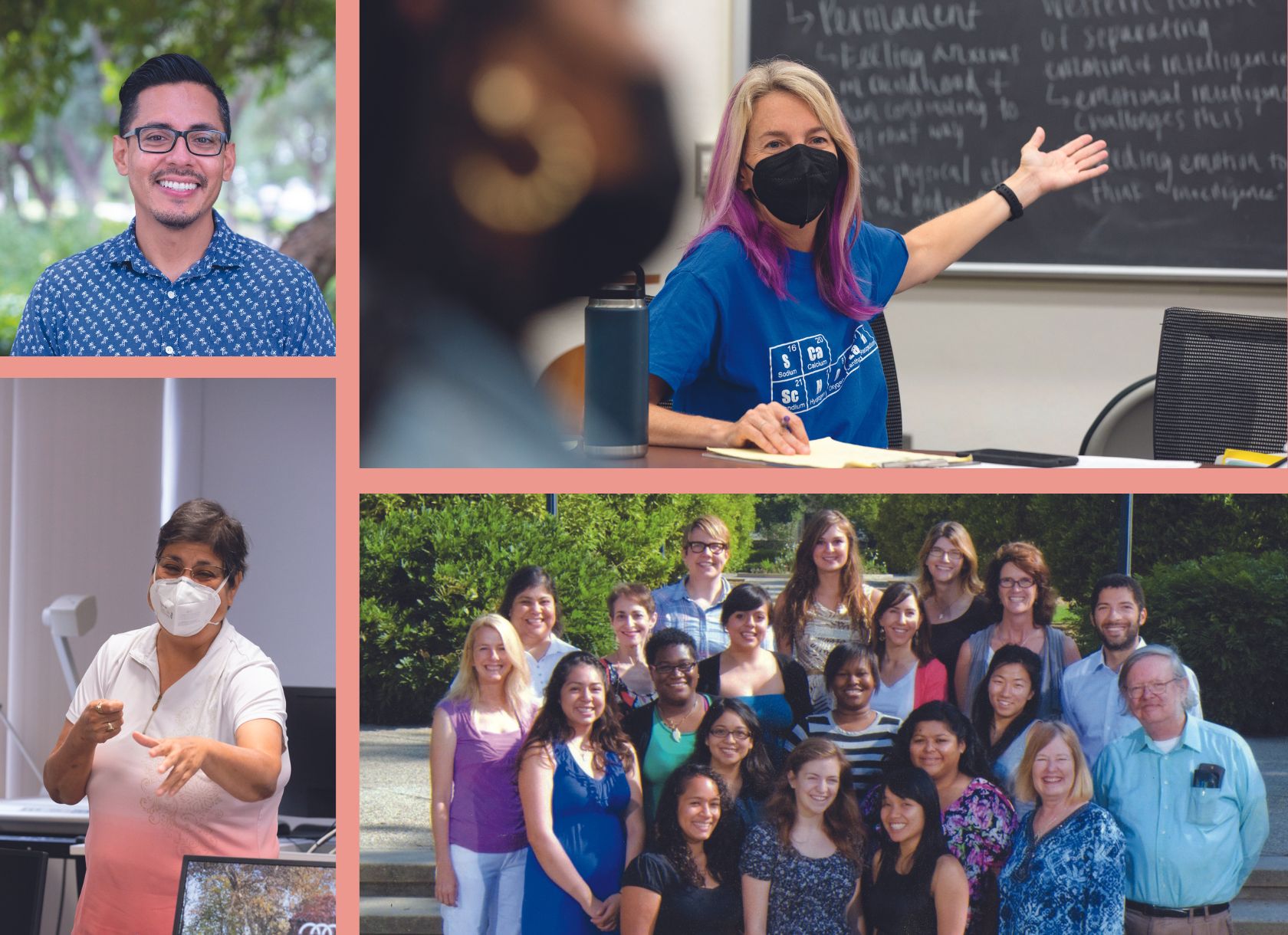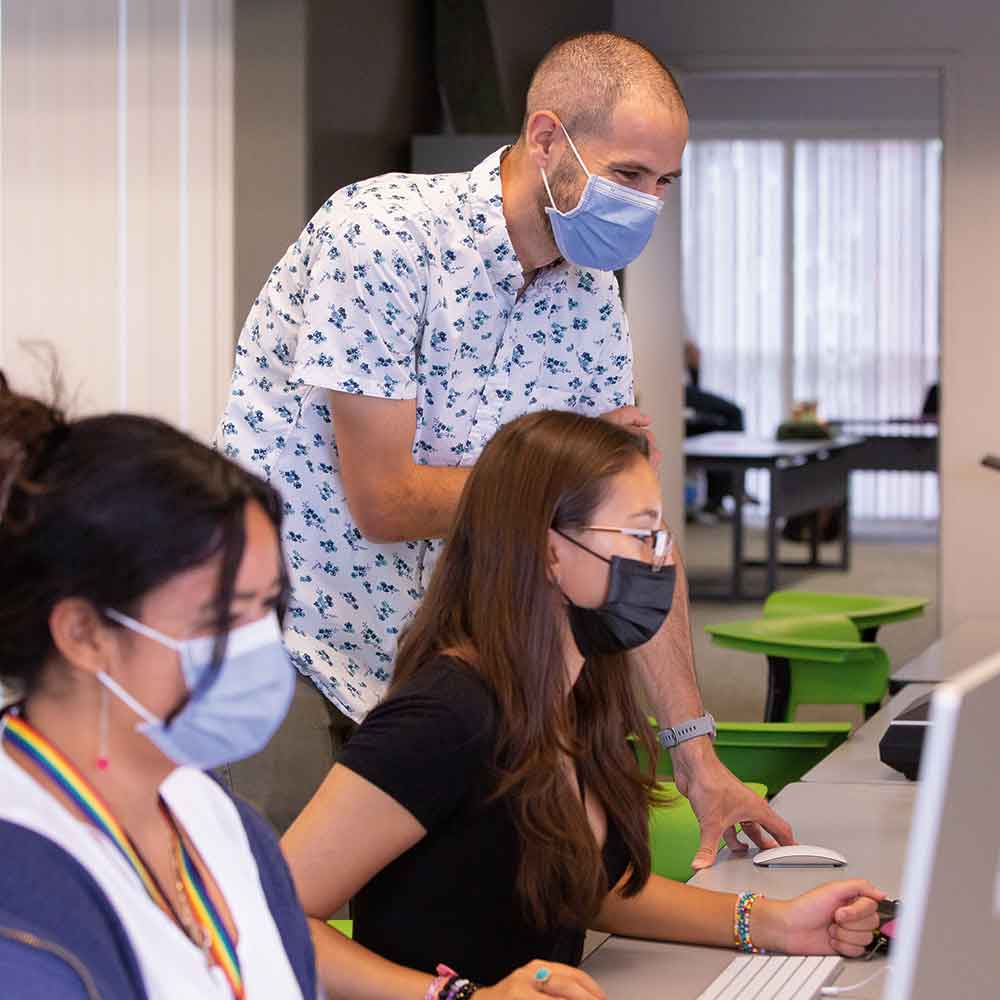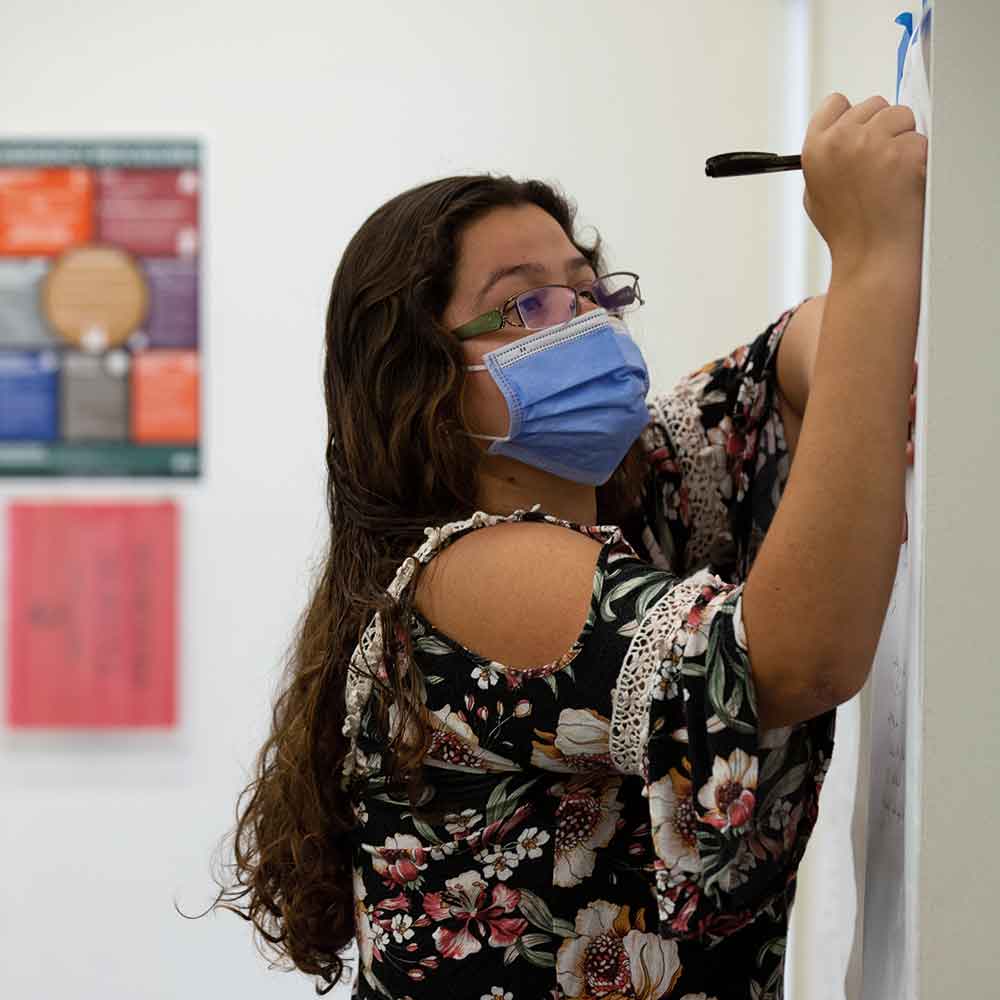By Ella Murdock Gardner ’22

The summer after her sophomore year in high school, Katelyn Lam picked up a green slip of paper that she now credits with altering the course of her life. Earlier that year, she had been accepted into Scripps College Academy (SCA), the College’s flagship program for high-achieving high schoolers who seek to become the first generation in their families to pursue higher education.
She’d arrived on campus for the two-week summer session with an energetic cohort of peers from high schools around Southern California, all reveling in the nervous thrill of newfound independence that comes with eating meals in a dining hall and sleeping in a residence hall. On this particular afternoon, Lam and her classmates were participating in an extracurricular activity designed to familiarize them with colleges across the country. Lam selected a slip of paper from the pile at random and presented the information it contained to her peers.
“I ran through my presentation, like, ‘This is Barnard, it’s a small women’s college, it’s located in New York,’” Lam says, tamping down her natural bubbliness to illustrate mild exasperation with the exercise. “And for the time, that was it.”
Lam filed the leaflet away in a binder and forgot all about it until the fall of her senior year in high school, when college application season rolled around. As she sorted through the materials she’d collected throughout her time as an SCA scholar, the green slip of paper leaped out at her. By that time, having spent over a year immersed in life at Scripps, the fact that Barnard was a women’s college now seemed more like a boon than a limitation. The roughly 2,700 miles separating Lam’s home in Pomona, California, and Barnard’s location in New York City felt less daunting after living away from her family during the two-week summer program.
“I still talk about that green paper all the time,” says Lam, who started her second year at Barnard this August. (The color of the leaflet, a detail Lam returned to again and again in the telling, seems metaphorically apt. Green is the color of new beginnings, the color of go, go, go.) “It unlocked a new path for me, one I’d never even imagined.”
Scripps College Academy is turning 20 this year, making it older than Lam herself. The brainchild of Scripps’ sixth president, Nancy Bekavac, and spearheaded by Vice President for Academic Affairs and Dean of the Faculty Amy Marcus-Newhall, in consultation with faculty including Professors Nancy Neiman and Mary Hatcher-Skeers, the program is Scripps’ answer to a problem with which the entire field of higher education has grappled for many years: how to support low-income, first-generation high schoolers who aspire to attend college but struggle to get a foot in the door. Funded by the James Irvine Foundation and gifts to the College from donors like Chapman Taylor P’17 who is passionate about supporting students who “despite coming from a less advantaged environment, have both the determination and the ability to succeed,” the program boasts a track record of success. According to the program’s most recent data, 96 percent of SCA scholars go on to enroll in a four-year college or university.
“Our goal was never simply to bring these students to Scripps after high school, although we’re always thrilled when they land here,” says Hatcher-Skeers, who serves as associate dean of faculty for racial equity and holds the Sidney J. Weinberg, Jr. Chair in Natural Sciences. “Our goal is to ensure they have the tools to get wherever they want to go and thrive once they’re there.”
As a former first-generation college student himself, SCA Director Roberto Escobar understands the power of timely guidance. Growing up in a low-income, single-parent household in El Sereno, California, Escobar assumed he would never be able to attend college for a simple reason: He was undocumented.
“Back then, there was no DREAM Act; there was no financial support at the federal or state level for students like me; there was nothing,” he says. “I wasn’t motivated to pursue academic excellence in high school because I couldn’t see the point.”
After graduating, he worked fulltime and attended community college at night, bouncing from class to class without a sense of how his studies might amount to any larger goal. Eventually, as his citizenship status changed, Escobar obtained his bachelor’s degree from California State University, Northridge and his master’s degree from Claremont Graduate University via Columbia University in New York.
“I tell my students that there’s nothing necessarily wrong with the way I got my education, but it could have been easier if I’d known the right questions to ask, or if someone had told me I didn’t have to take out as many loans as I did,” he says. “My story resonates with them, and it helps me show them that college isn’t just an abstract concept. It’s a place where they belong.”

The academic structure of the two-week residential program mirrors Scripps’s signature Core Curriculum in Interdisciplinary Humanities. The scholars all study the same materials, attend lectures delivered by faculty across a range of fields, and digest what they’re learning in small discussion sections led by professors and Scripps student mentors. For the past five years, the curriculum has been structured around the novel Piecing Me Together by Renée Watson, which tells the story of a young Black woman thrust into a new social environment after earning a scholarship to a private high school. Associate Professor of Writing and SCA Faculty Liaison Kimberly Drake first discovered the novel during a trip to Powell’s Books in Portland, Oregon, a fact she likes to tell her students since the bookstore figures within the narrative.
“I asked the clerk if they had any nuanced, literary young adult novels that centered on a young woman of color and that didn’t revolve around romance or vampires or dystopian worlds,” Drake says. “This one is perfect because its narrative mirrors the scholars’ experience of leaving home and navigating life at an institution like Scripps.”
Professors in the program build bridges between the novel and the real world, weaving their disciplines and lived experiences into their lectures. For example, Assistant Professor of Economics Nicholas Kacher delves into gentrification, discussing how urban environments shape possibilities; Associate Professor of Music Cándida Jáquez reflects on how her experience of playing an instrument growing up led to her interest in ethnomusicology; Writing Associate Adam Novy draws connections between the Black painters mentioned in the novel and imagery in the digital age.
“We give the students all these different lenses, and we then ask them to think about how they connect with the text on a personal level,” says Novy, who has participated in the program since 2018 and calls it the best thing he does all year. “That exercise often spawns some of the most creative and specific ideas for paper topics.”
The rigorous academic program pushes students to develop their critical thinking skills and present their ideas in essays that break free of the five-paragraph mold they’ve practiced over and over in high school.
“The students struggle in the beginning, but that’s not a bad thing,” Drake says. “College is hard, and we want them to realize that they’re capable of pushing through that difficulty; they’re not imposters, they can ask for help, and people in their community will support them.”
Individualized support is built into the program at every level, and it doesn’t end when the scholars leave campus at the end of the summer session. When Escobar became the director of SCA in 2013, he launched the STRIVE (Successful, Talented, Resilient, Impactful, Vocal, Empowered) program, which provides an extra four to six years of guidance to former SCA scholars to see them through college. SCA provides everything from SAT and ACT tutoring for students to FAFSA workshops for parents; it coordinates book clubs, film screenings, and field trips to cultural centers and performance venues like The Pasadena Playhouse; it creates opportunities for scholars to continue conducting research with professors at Keck Science Department, setting them apart in the applicant pool when applying to colleges. As Escobar notes, “not many high schoolers get that kind of exposure to the research, peer review, and publication processes.” When Lam was in high school, Escobar connected her with an internship with STEM Center USA, where she taught block-based coding and robotics to elementary schoolers.
“I had no prior experience with robotics, so I had to learn everything on the go, but I fell in love with it,” Lam says. “I completely switched gears—before that, I’d thought I wanted to study medicine, and now I’m majoring in computer science.”

Even when the scholars graduate from high school, SCA continues checking in, going so far as to send care packages (a favorite of Lam’s) around finals season replete with cough drops, hot chocolate, popcorn, Emergen-C, tea— “everything they need to get them through late nights spent studying,” as Escobar puts it.
“It doesn’t matter what school they go to or how far away they are; they can reach out to us at any time,” Escobar says. “If they need help figuring out financial aid, if they’re struggling with a class, if they’re having trouble with a professor or a roommate, we’re here for them.”
Some SCA scholars maintain—and fortify—their connection to Scripps even when the STRIVE program ends. Visiting Assistant Professor of Psychology and SCA alum Melissa Mesinas ’12 still remembers the first time she set foot in the W.M. Keck Science Center during her junior year of high school.
“I had stereotype threat from very early on, so I never felt like I could excel in the sciences,” she says. “When I started doing research through the SCA program, I suddenly realized, ‘Oh, I can use a microscope, I can follow a complicated lab procedure.’”
Come senior year, Mesinas was accepted into nearly every college and university to which she applied. She enrolled at Scripps, where she dual majored in psychology and Hispanic studies, used a Watson fellowship to create cultural programming for Zapotec indigenous communities living in Los Angeles, and helped to found the First Generation @ Scripps Program, which serves as a resource for students at the College to this day. After spending a year in Peru on a Fulbright Scholarship and earning her PhD from Stanford, Mesinas returned to Scripps last year as a professor.
“Being back on campus with my former professors as my colleagues—it feels like coming full circle,” she says.
Like Mesinas, Associate Director for Admission Diversity and SCA alum Lyanne Dominguez ’13 has spent almost half her life at and around the College since she first arrived on the orange-tree speckled campus as a 16-year-old. Drinking in the enthusiasm of the other scholars and the Scripps students working in the program, she felt like the people around her were “just the coolest in the world.” The connections she forged during those two weeks became the bedrock of her support system throughout her academic and professional development.
“The day I graduated from Scripps, there were five SCA alums up on that stage, and all but one of us went into education in some capacity,” Dominguez says. “I think that’s because we have a particularly strong sense of what education means, what it can do for people.”
Lam, who spent this past summer designing computer science curriculums for New York City public school teachers, carries this sentiment forth from the classroom into the world.
“I’m interested in figuring out ways to make what I’m learning in my college STEM classes accessible to others,” she says. “I really think anyone can learn this stuff; it just comes down to whether we have the right support.”

